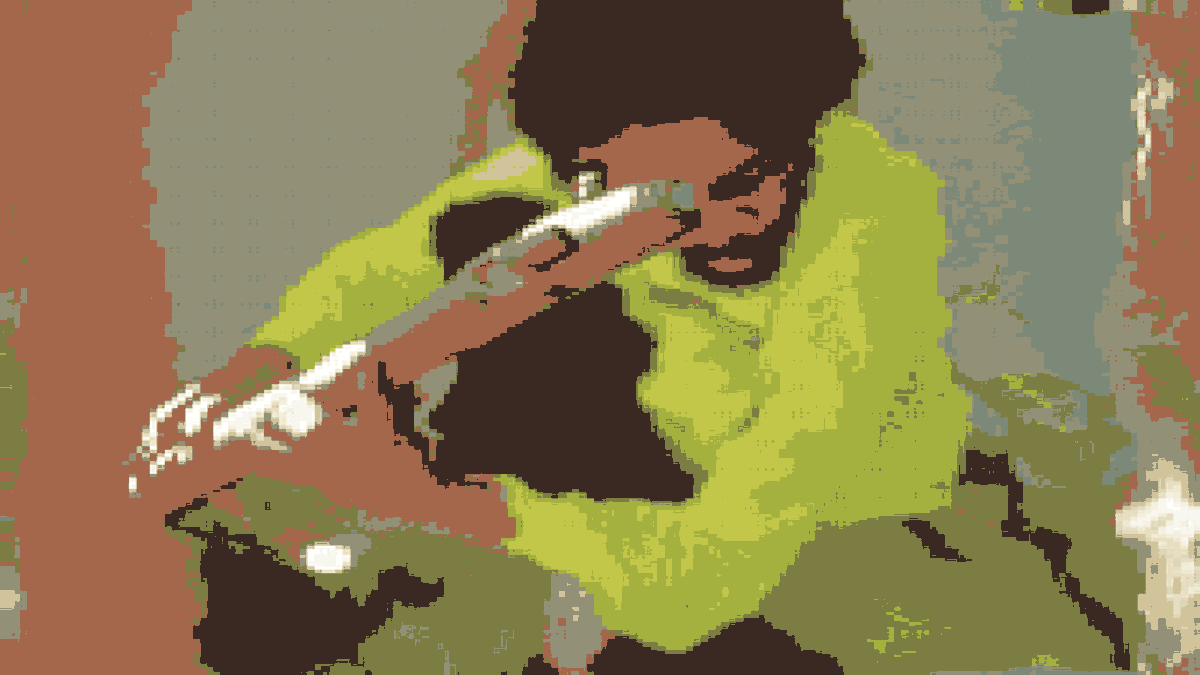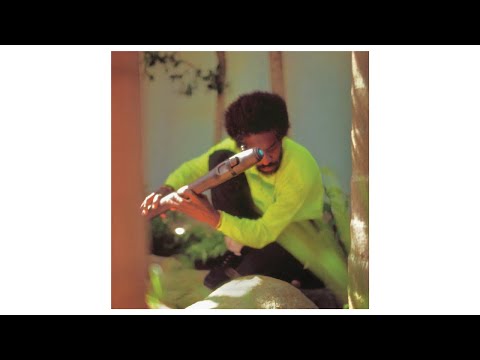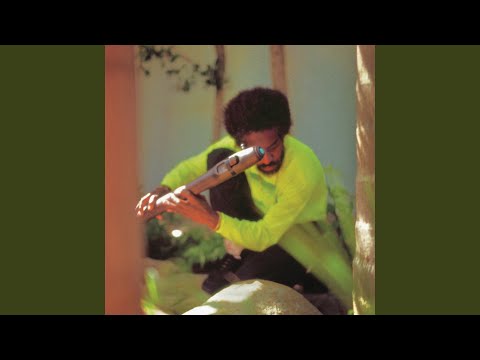In late November, André 3000 released “New Blue Sun,” a CD immediately dubbed his “flute album”—though clearly as much for the picture on the cover as for the sound of the instrument 3000 plays. Nonetheless, as a lapsed, bad flutist, I decided to listen to the music with a current, extremely good flutist: Eric Lamb, prolific soloist, former core member of the International Contemporary Ensemble, and professor of flute at the Gulda School of Music in Vienna. At my place in Berlin, we cracked open a bottle of cheap bubbly and talked about Feldmanesque dramaturgy, nostalgic electronics, and the things through which one blows.
Eric Lamb: The first thing I thought was: This is clearly not for the radio. In normal pop music, if a song is five minutes and 50 seconds, people are like, “This is the most in-depth, developed piece of music ever.” And then I thought: Why am I sober? Because he clearly was not.
Jeffrey Arlo Brown: It’s pretty clear that he was not sober when he was making this music.
EL: It took me a long time to recognize what was “flute” about it. It’s not in this acoustic sense of what we know as flute playing.
JB: It’s not the instrument. It’s not what you play.
EL: It’s not what I play. It was a little bit like false advertising.
JB: There’s a picture of him on the cover with a big wooden flute…
EL: …and I was like, Where’s she at?
[We listen to a few short, peeping notes from the instrument that sounds most like a flute on the album.]
JB: What instrument do you think he’s playing?
EL: It sounds like one of these like electric things that you potentially do blow through. But whether or not the sound is created in a way which resembles flute or recorder technique…?
JB: It sounds like those digital saxophone things that you blow into but that can make different MIDI sounds. Do you know what kind of fingerings those have?
EL: Probably not the Böhm system.
There are dynamics involved. If there is blowing involved—that’s what she said—the dynamics would be achieved by how hard or how little you blow.
JB: It has these short little melodies and then these [chirping sounds].
EL: Formally, it’s hard to put your finger on. Like, where is it going? Any piece that’s 15 minutes long has to have some sort of form. Even with something big by Feldman, it has a real sense of form. You always know where you are in the dramaturgy. And for me, this doesn’t.
JB: It feels very spaced out.
EL: To be honest, I like it a lot. You know, in any Beyoncé song there’s a beginning, middle, and end. Even Destiny’s Child: Michelle is always singing the bridge, she’s the queen of the bridge. It will always be like, Beyoncé, Beyoncé, Kelly, Beyoncé, Michelle, Beyoncé, Beyoncé. That’s a formula. Every song in pop music, there’s always a formula, and this doesn’t fit into that.
JB: The second track of the album is titled “The Slang Word P(*)ssy Rolls Off The Tongue With Far Better Ease Than The Proper Word Vagina. Do You Agree?” Do you agree?
EL: I don’t think it’s up to me to say. I feel very uncomfortable having this conversation.
JB: This is hard-hitting journalism.
EL: Are we still on the first track?
JB: Yeah.
EL: Let’s go back to the beginning and then go back to where we are now. I’m curious to see if we’re in the same place harmonically. Have we moved? No.
To be really honest with you, I was listening to this the other night in bed. And I had this strong memory of listening to 97.9 WJLB, the radio station in Detroit, Michigan. And they had “Quiet Storm.” At 10 p.m., I’d just finished my calculus homework, and I’m on the phone with a friend, and they play, like, “Moments in Love.” The quality of the electronics is really nostalgic to me.
The latest from VAN, delivered straight to your inbox
JB: He could be using a lot of old synthesizers.
EL: This is music my parents would have listened to. And interestingly enough, André3000 is probably just a little older than I am. This could be the kind of music he lost his virginity to. I don’t remember it doing anything other than this; there’s no real uptempo.
JB: It doesn’t have, like, a contrasting track.
EL: It does feel a bit monochromatic. It has not modulated at all, it kind of sits in one place. And therefore there’s very little forward momentum in the music. In all musics, particularly in jazz, you have this constant back and forth between major and minor. And this sits in a weird state where it feels like someone has taken a beta blocker or ADHD medication. There’s very little emotional contrast.
JB: It feels like a high Prozac dose.
[The third track on the album, “That Night in Hawaii When I Turned into a Panther and Started Making These Low Register Purring Tones That I Couldn’t Control … Sh¥t Was Wild,” comes on.]
JB: I think this is the Hawaii one.
EL: Yeah… Yeah.
JB: It reminds me of the first season of “White Lotus.”
EL: Jennifer Coolidge. Fucking love her. Can we just talk about her? [Extremely accurate Jennifer Coolidge-in-“The White Lotus”-voice:] “Oh my God. This is great. Is this a flute?”
To be fair, this is the first track we’ve listened to that has some rhythmic vitality. It’s something completely different, which is nice.
JB: Yeah, it has rhythmic vitality, but not a beat, which is cool.
EL: It’s ayahuasca. To me, the whole vibe of it—the people who get into ayahuasca from Brooklyn are a very specific kind of person. And this whole album—this sounds terrible—feels like a first world problem. I don’t know if that’s fair to say…
JB: It feels like a first-world album. You’re famous, you’ve got money…
EL: “I’m just going to sit and play the quote-unquote flute with my legs crossed.”
JB: It reminds me of being a teenager and smoking pot with my drummer friend and just playing for an hour, me on flute, him on drums.
EL: Freshman year at Oberlin. Bitch, hello. I went to Oberlin.
JB: Who do you think is the audience for this album?
EL: I just had dinner with a close friend who’s a flutist. I was like, “We’re listening to this new album,” and he pulled it up on his phone: “I’m going to listen to this on the way back to my hotel.” And then he texted me, he was like, “What just happened to me?”
It’s cute for people who would not have experienced something from a really experimental space. Maybe this is an entry point for some people, particularly for Black people, because that’s who [André 3000’s] audience has been. Of course there are lots of Black people who are really interested in alternative musics.
JB: Yeah, there’s a huge tradition of Black experimental music.
EL: Absolutely, but this pales in comparison. This is like the light version of that, from my perspective. It could be much more futuristic. But this is the reason why, when I put it on Spotify, it recommended Steve Reich, George Crumb, and Enya. I was like, Bold, but OK. ¶
Subscribers keep VAN running!
VAN is proud to be an independent classical music magazine thanks to our subscribers. For just over 10 cents a day, you can enjoy unlimited access to over 875 articles in our archives—and get new ones delivered straight to your inbox each week.
Not ready to commit to a full year?
You can test-drive VAN for one month for the price of a coffee.




